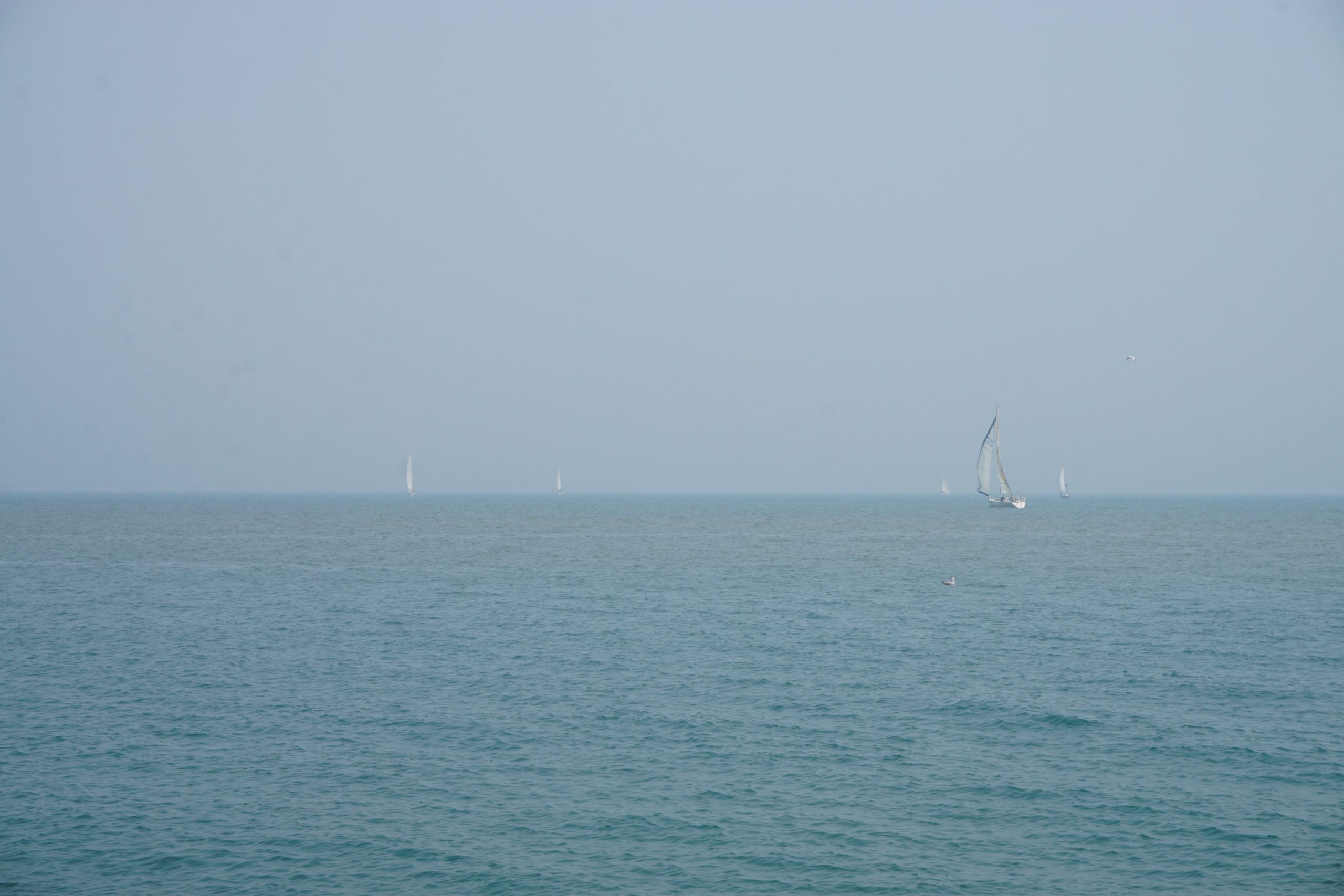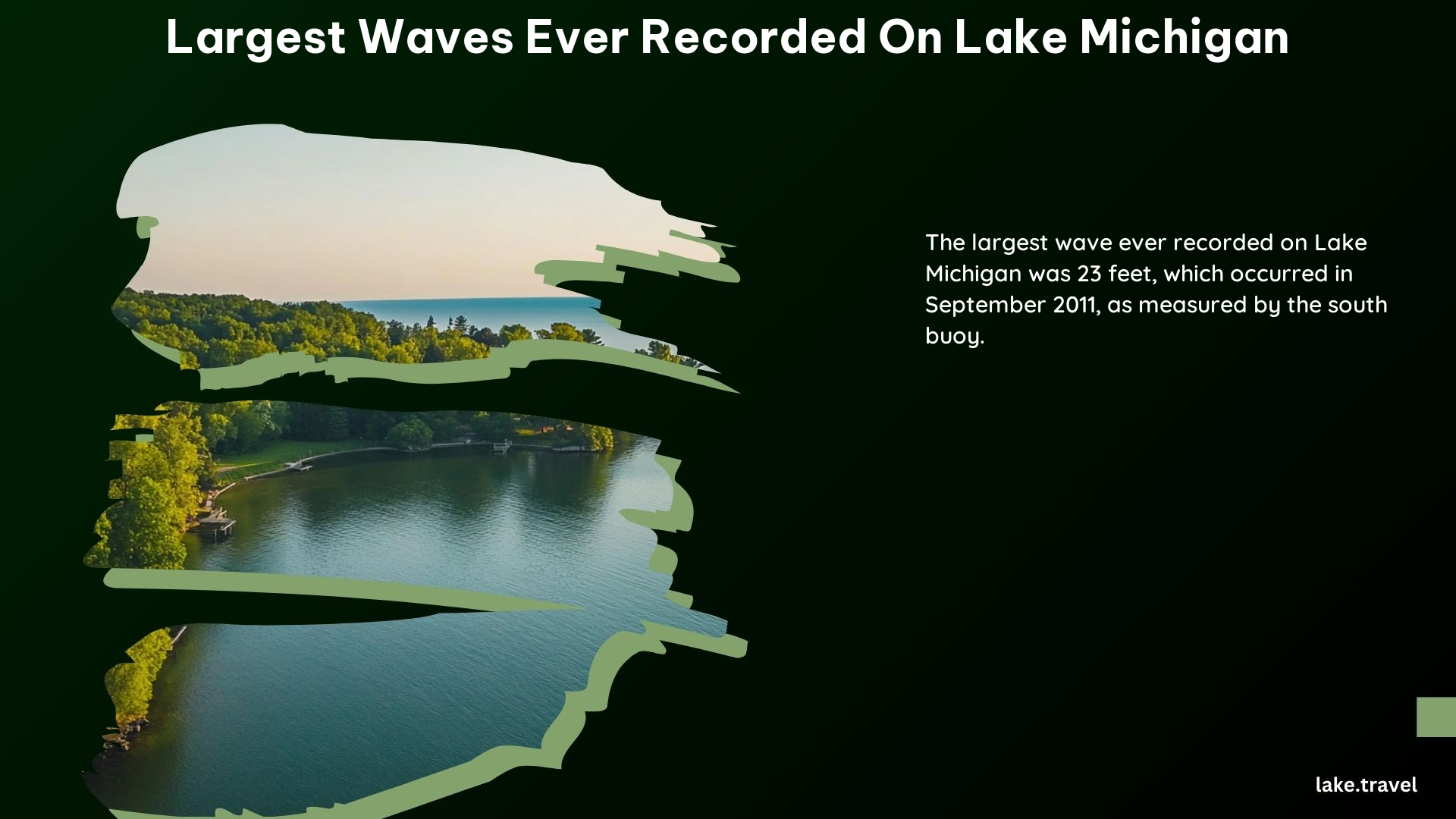The largest waves ever recorded on Lake Michigan were measured by the southern buoy located in the middle of the lake. The highest recorded wave height was an astounding 23 feet, which occurred in September 2011. This buoy has been measuring waves since 1981, providing valuable data on the lake’s dynamic and often unpredictable nature.
The Highest Recorded Waves on Lake Michigan

As mentioned, the highest wave ever recorded on Lake Michigan was a staggering 23 feet, which occurred in September 2011. This wave was measured by the southern buoy, which is located in the middle of the lake, far from the shoreline.
| Date | Wave Height |
|---|---|
| September 2011 | 23 feet |
| October 2017 | 21 feet |
| November 2019 | 19 feet |
| August 2014 | 18 feet |
| May 2013 | 17 feet |
These record-breaking waves are a testament to the power and unpredictability of Lake Michigan’s weather patterns. Strong winds, storms, and other atmospheric conditions can all contribute to the formation of these massive waves, which can pose a significant threat to both recreational and commercial activities on the lake.
Factors Contributing to Extreme Waves on Lake Michigan

Several key factors contribute to the formation of the largest waves ever recorded on Lake Michigan. Understanding these factors can help us better prepare for and respond to these extreme events.
Wind Speed and Direction
One of the primary drivers of large waves on Lake Michigan is the wind. Strong, sustained winds blowing across the lake’s surface can generate significant wave heights. The direction of the wind is also crucial, as waves tend to be larger when the wind is blowing in the same direction as the lake’s natural fetch (the distance over which the wind blows).
Storm Systems
Powerful storm systems, such as low-pressure systems and frontal boundaries, can also lead to the development of extreme waves on Lake Michigan. These weather patterns can bring strong, gusty winds, as well as heavy precipitation, which can further contribute to wave formation.
Lake Depth and Bathymetry
The depth and underwater topography of Lake Michigan also play a role in wave formation. Shallower areas of the lake, particularly near the shoreline, can cause waves to become steeper and more powerful as they approach the land. Additionally, the lake’s bathymetry, or the shape of the lake bed, can influence wave patterns and amplify wave heights in certain locations.
Seiche Effect
The seiche effect, a standing wave oscillation in an enclosed or partially enclosed body of water, can also contribute to the formation of large waves on Lake Michigan. This phenomenon can be triggered by sudden changes in atmospheric pressure or strong winds, and can result in waves that repeatedly bounce back and forth across the lake, creating a resonance effect.
Impacts of Extreme Waves on Lake Michigan
The occurrence of these record-breaking waves on Lake Michigan can have significant impacts on a variety of activities and industries.
Recreational Activities
Large waves can pose a serious threat to recreational boaters, swimmers, and other water enthusiasts on Lake Michigan. These waves can capsize small watercraft, create dangerous rip currents, and make it difficult for individuals to safely navigate the lake.
Commercial Shipping
The shipping industry, which relies heavily on Lake Michigan for the transport of goods, can also be impacted by extreme waves. Large waves can damage ships, disrupt shipping schedules, and even lead to the closure of ports and harbors, causing significant economic disruptions.
Coastal Infrastructure
Extreme waves can also have a significant impact on the coastal infrastructure along Lake Michigan’s shoreline. High waves can erode beaches, damage seawalls and breakwaters, and even flood low-lying areas, potentially causing millions of dollars in damage to homes, businesses, and other structures.
Ecological Impacts
The effects of large waves on Lake Michigan’s ecosystem can also be significant. Powerful waves can disrupt aquatic habitats, damage sensitive wetlands, and contribute to the spread of invasive species, ultimately impacting the overall health and biodiversity of the lake.
Monitoring and Forecasting Efforts
To better understand and prepare for the occurrence of extreme waves on Lake Michigan, various monitoring and forecasting efforts are in place.
Wave Measurement Buoys
As mentioned earlier, the southern buoy located in the middle of Lake Michigan has been measuring wave heights since 1981. This buoy, along with other wave measurement stations around the lake, provides valuable data that can be used to track wave patterns and improve forecasting capabilities.
Numerical Wave Models
Researchers and meteorologists also utilize numerical wave models to predict the formation and behavior of waves on Lake Michigan. These models incorporate data on wind, weather patterns, and other environmental factors to generate forecasts of wave heights and other critical information.
Early Warning Systems
In addition to monitoring and forecasting efforts, some communities along the Lake Michigan shoreline have implemented early warning systems to alert residents and businesses of impending high-wave events. These systems can help people prepare for and respond to the potential impacts of extreme waves.
Conclusion
The largest waves ever recorded on Lake Michigan are a testament to the power and unpredictability of this vast inland sea. With wave heights reaching up to 23 feet, these extreme events can have significant impacts on a wide range of activities and industries, from recreational boating to commercial shipping and coastal infrastructure.
By understanding the factors that contribute to the formation of these record-breaking waves, and by continuing to invest in monitoring and forecasting efforts, we can better prepare for and respond to these dynamic and potentially dangerous phenomena. As we continue to explore and enjoy the wonders of Lake Michigan, it is crucial that we remain vigilant and take the necessary precautions to ensure the safety of all who venture onto its waters.
Reference:
– National Oceanic and Atmospheric Administration (NOAA) – Great Lakes Environmental Research Laboratory
– U.S. Army Corps of Engineers – Detroit District
– Michigan Sea Grant
